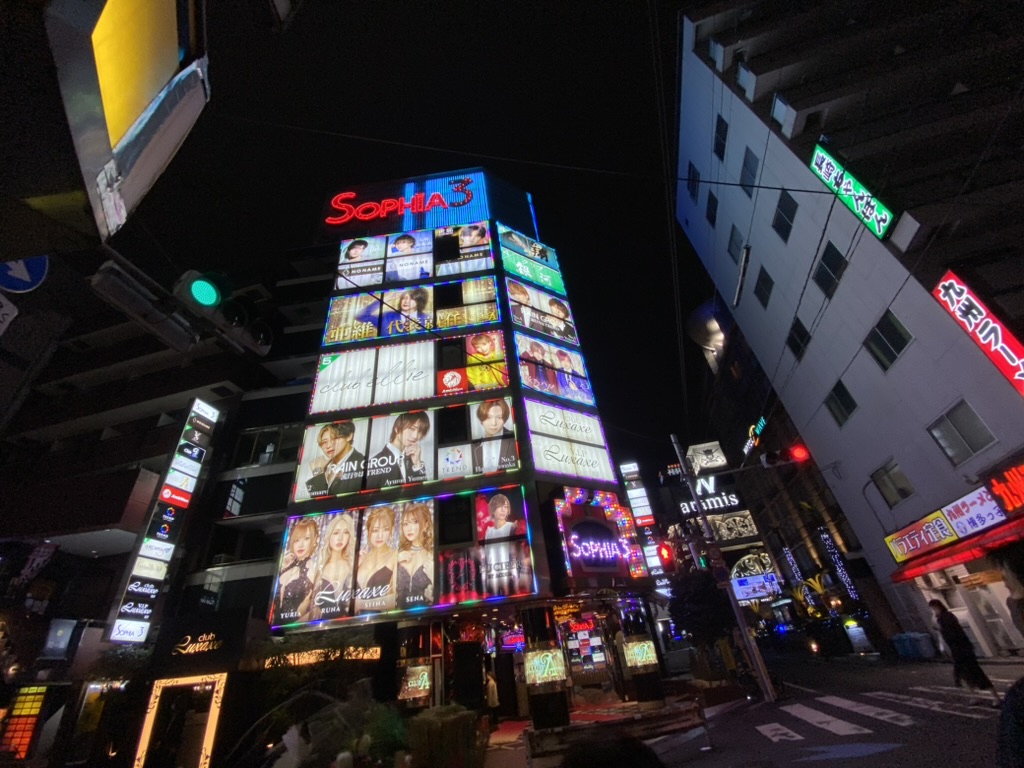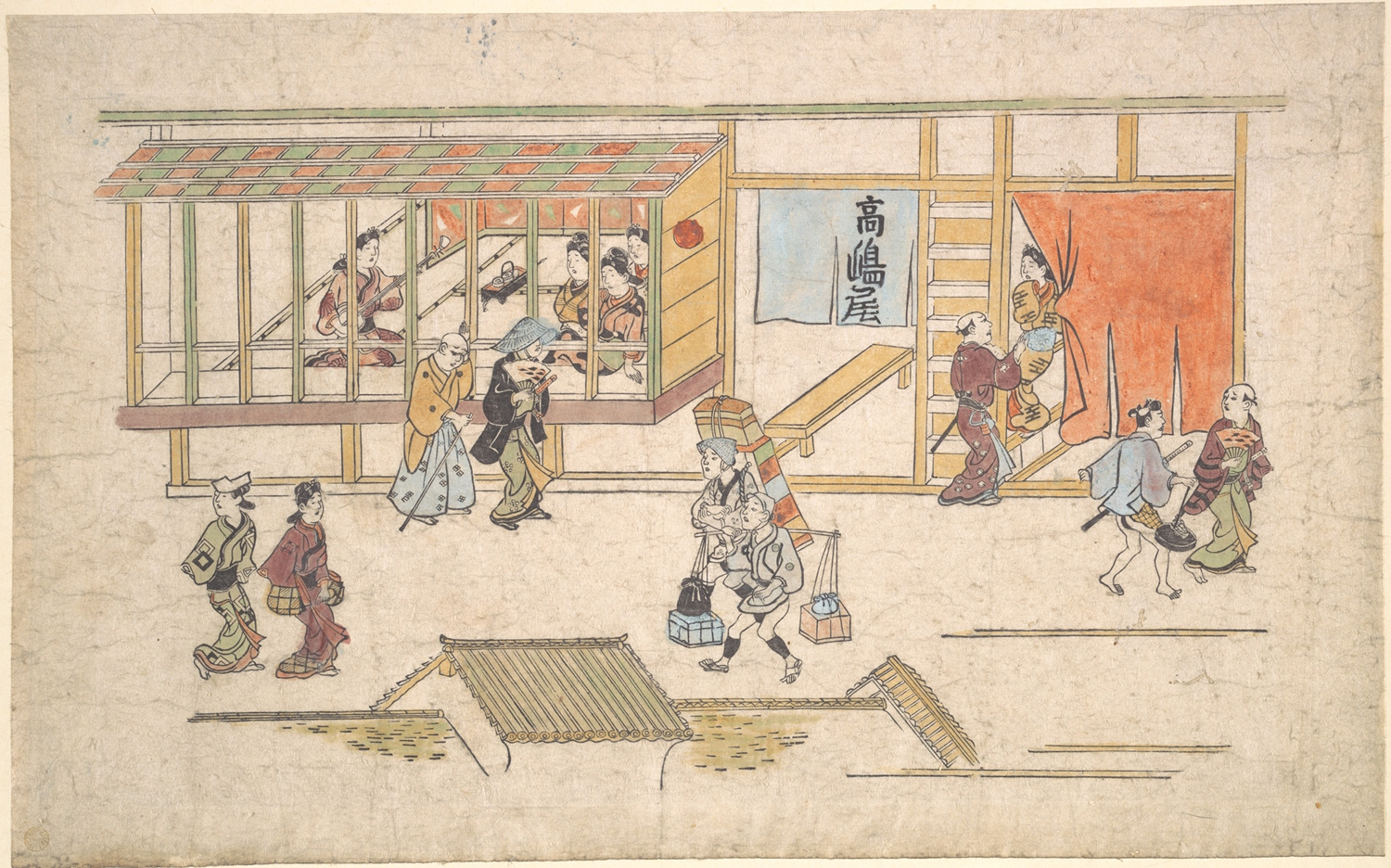
Zipper’s Guide to the Goonosphere
“Gooning can be as simple as comfortably sitting in your room, putting on some porn, and edging for hours without cumming,”
By Midori © 2022

Are you planning on visiting Japan to take in the culture and enjoy kink life? You totally should!
If you’re coming from “the West,” Japan offers a mind-boggling array of unique experiences and pleasures: food, history, sights, art, architecture, performing arts, transportation, language system, and certainly entertainment and pleasure life. You’ll find plenty of info for these in the usual G-rated resources.
When it comes to the kinky hot spots, you won’t find any information in your typical Lonely Planet or Fodor’s Travel Guide. After my most recent trip to Japan, I shared a few of my favorite places plus some essential tips on Japanese kink bar etiquette. You can find that in my BDSM Travel Guide to Japan here.
Accessing and understanding kink life in Japan, however, is an entirely different matter.

Kabukicho red gate and colorful neon street signs at night, Shinjuku, Tokyo. Basile Morin, CC BY-SA 4.0, via Wikimedia Commons
The BDSM realities are different in ways you won’t find explained in common travel and culture sources. There’s much to discuss on this, more than I have space here, so please consider this as a whetting of your global kink curiosity. I’ll cover more in future articles, and I’m happy to discuss these during my biweekly Office Hours on Patreon.
People ask me, “Where do I find the kink community in Japan?”
I’m from Japan, and I go back often to hang out in kinky places, teach, explore, and make new pervy friends. You’d think this would be an easy question for me to answer. The inquiring traveler thinks so too.
Except it’s not.
They’re met with my long sigh, a contemplative pause, and a pained expression. “Do you want the short answer or the long cultural analysis and contextualizing?” I ask. They look at me with hope, excitement, and bafflement. I know that I’m about to disappoint them.
Please, don’t shoot the messenger.
“Unless you’re looking for the ex-pat pervs, the ‘BDSM Community’ as you have likely experienced and expect, does not exist among Japanese folks. Do you have heaps of money for the commercial venues? Do you speak, read & write Japanese like a local? Unless you do, you probably won’t get into kink spaces. And don’t push the matter like some latter-day Commodore Perry.”
The English-speaking resident foreigners have their own self-organized pockets of social circles, much like kinksters in any small town in the USA. The people are lovely. As to how available or accessible they are to tourists coming through town, that’s entirely up to them. If you find them on various kinky networks, you can ask if you’d be welcome. But don’t expect automatic access. Be nice. Take a ‘no’ like a champ.
Why can’t you find Japanese locals on kink social sites like FetLife? Because they speak, read, and write in Japanese.
People who ask this refer to sites centered on English or other Latin-script languages. The Japanese language uses kanji, hiragana, and katakana, not Latin or Roman letters. Why communicate with one’s own people in someone else’s language?
Beyond the obvious difference in language, kink cultural structure and perv social life in contemporary Japan are extremely different from that of the Western global north. It’s centered on the framework of the commercial entertainment district and revolves around spaces created by for-profit business entities.
Japan’s pervy social systems are not formed in what might be called “The North American Model.” (Bear with me on this name. I’m still working on a more apt moniker in my ongoing social history research.) The North American Model is more of a horizontally self-organized gathering of private individuals who hold kink as part of their humanistic self-expression. Munches are one good example.
The Japanese for-profit structures cater to kink tastes through businesses that include kink-themed hostess bars, swingers bars, concept or theme bars, variety shows, stage acts, and more directly in-person service providers. Consider these as bastard descendants of the government-sanctioned pleasure quarter of the Edo era (1603 – 1867 CE).

Tokyo street scene host bar billboard, by Midori 2022
Now, this is where we get into some deep cultural nerding! In the early 1600s, the Tokugawa government approved, licensed, regulated, and taxed walled-in areas of luxury entertainment venues and brothels in Edo (now Tokyo), Osaka, and Kyoto. Edo had a massive population boom as it became the new seat of power and administration. There were likely twice as many men than women. Entertainment, especially the erotic variety, was in high demand.

Hishikawa Moronobu scene in the Yoshiwara 1680
Around the time that the Mayflower Pilgrims were setting the course for America’s sex-negative prudish future, Japan already had a well-organized red-light district where partaking of the floating world signaled social and economic virility for the big spenders. For the customers, the pleasure quarters provided a rare escape from the strict limitations of one’s birth caste. If you had the money, the merchants provided a slice of decadent heaven. For the women working there — most of whom were sold to the brothels as young girls to pay their father’s debt or keep the family fed through famine and taxation by the regional lords — it was hell on earth.
The pleasure quarters of Edo became a firmly entrenched system in this complex, vertically organized, group-oriented society. For those who could afford a slice of the fantasy island, it was a relief and a compartmentalized refuge from the unrelenting pressures and restrictions that kept the caste-based social order humming along. Of course, the system served the governing authorities very well through taxation. The Tokugawa regime was also concerned that a powerful merchant class could destabilize their authority. What’s one of the solutions to that? Encourage the glamor and luxury of the pleasure quarters as bread and circuses to keep the pesky bourgeoises busy. It also curbed crime and contained social disorder.
The Shogunate government licensed three pleasure quarters. Shimagara in Kyoto, Shinmachi in Osaka, and lastly Yoshiwara of Edo(Tokyo); the most famed and notorious of the three sister districts. The Yoshiwara partied hard for three centuries, making its name synonymous with all the glitz of the Floating World.
Yoshiwara and the Floating World (ukiyo 浮世) begat fashion and trends followed fiercely by the status-conscious middle class and fashionistas of the time. The luxury entertainment crafts of Yoshiwara profoundly influenced what would eventually symbolize refined Edo and Japanese culture: cuisine, music, theater, textile, comedy, and popular media such as the ukiyo-e (浮世絵). The red-light district became the cradle of national cultural art. Think of the economies and businesses of Las Vegas, the West End, and Broadway birthing the pinnacle of the Western cultural arts. If you think that’s weird, think about what Shakespeare was doing and for whom. The bawdy becomes the beauty. It’s not a stretch.

Prostitutes behind a harimise show window (張見世) in the Yukaku (遊郭, red light district) of Yoshiwara in Tokyo. Possibly by Kusakabe Kimbei (日下部 金幣) (1841 – 1934), Public domain, via Wikimedia Commons
The propaganda leaned hard on patriotism, nationalism, racial purity, and xenophobia. Of course, they had plenty of practice with bureaucratically organized sex slavery with “comfort women” in Korea. Domestically, they cloaked governmental pimping under the banner of Patriotism rather than slavery to brutalize the enemy. In 1958, in a grand act of hypocrisy, the Japanese government outlawed prostitution, even that which they had created themselves.
The red-light district and adult entertainment did not disappear — not one bit. By now, the cultural system of adult entertainment of all types was firmly entrenched into the fabric and system of social order. It was a place where the ordinary worker bees, if they had enough Yen from their daily grind, could be a lord of the floating world, even if for only one night or one hour. This compartmentalization was a social and psychological necessity for individuals to carry on as functioning members of the hive. It was also a place where marginalized people, those not fitting into the mainstream, and folks without access to economic opportunities and privileges, could make a living and find a niche. It still is all of these things.
While the historical and official Yoshiwara district is gone, the red light and pleasure districts are bigger business than any Shogun, Emperor, or bureaucrat could have ever imagined. It was, and still is, highly competitive as more companies compete for customers in this densely-packed city with a high cost of living. Repeat business and patron loyalty was the key to survival. The mercantile minds were brilliant at sniffing out niche interests to create super-specialized services and wedge them into tiny spaces. The sheer variety of venue themes is mind-boggling: Formal maids, anime maids, butlers, mistresses, matrons, girls in animal ears and glasses, office workers and secretaries, medical, and female-to-male cross-dressed pirate princes, etc, etc.
Today, these venues serve as de facto gathering spaces for people, whether just curious or deeply devoted to the themes. BDSM and shibari are just one of many exotic themes and proxy living rooms where people can feel a sense of belonging.
Access to BDSM and socializing in a kink milieu is firmly part of this recreational service sector. BDSM, shibari, sex work, and the entertainment industry are intricately tied together. Kink is experienced as recreation, something titillating to consume for amusement and find camaraderie within a socially-permitted business container.
In these spaces, people might learn about basic BDSM skills and activities, feel comfortable asking questions, and perhaps relax enough to reveal something of themselves. At the same time, because it’s a commercial venue, there’s a literal and metaphorical escape route. They can leave and keep the kink from coming home into their private lives. There is the plausible deniability to others and oneself that it was, after all, just a theme bar and a bit of a naughty night out.
Do not confuse these kink-themed bars with western-style play parties. These are hostess bars with kinky décor where play, usually light play or performances, might happen. No sex. Generally no nudity. People are drinking, sometimes heavily. In swingers’ bars with kink-themed playrooms, there might be some kink and sex, and a full bar. If you aren’t comfortable in S&M environments with alcohol, these are not good places for you.
The guests often watch or talk about kink with the staff, who know how to keep the conversation and drinks flowing. The commercial venues become places where people see some kink and learn a bit through informal shares. On many occasions, I have watched customers ask what hot wax, whips, canes, or rope feels like. The lingerie-clad hostess drips a few drops on the customer’s arm, gives them a few swats, puts a collar on them, then pours another round of expensive whiskey.
Contrary to what some might imagine or insist upon about Japan, BDSM and shibari isn’t practiced by every adult, considered a sacred or meditative art, or taught in rigorously demanding martial arts style schools. Are there some people who do that? Sure. Are there some places where you can enjoy a disciplined learning program? Sure. But the insinuation that shibari is commonly practiced and accepted as a meditative and spiritual tradition in Japan is an unfortunate steaming pile of Orientalist fiction created by Westerners.
How things work behind the scenes in BDSM venues is not shared with curious foreign tourists or those coming to learn from the in-house rope bondage specialists. It’s a business of fantasy making. Don’t explain the magic. Keeping the illusion alive keeps the business alive. As someone who grew up in Tokyo and is seen as part of the greater pleasure industry (there’s no equivalent of my work in Japan, so they think of me as a perv culture writer) I’m privileged to have woman-to-woman frank conversations with the workers. These have been insightful, giving me multifaceted perspectives into the kinkier corners of the Floating World.
The workers in these venues usually learn on the job. In reality, many workers have limited or no personal experience in kink. Often it is not even their personal interests. It’s a job.
Customers learn from entertainers, who themselves may have little actual play experience. Staff-to-staff training of BDSM skills as part of their hostess repertoire is probably the same as for other types of workers back in the floating worlds of Edo.
These staff are exceptional at the central purpose of their service: to help you feel good, seen, and appreciated as a person. They work hard on their craft of personal space-making and lavishing attention on the customer. They are not there as the patron’s personal domina or private submissive partner. These are mutually agreed-upon and highly-choreographed pseudo-relationships.
When you go to these spaces, enjoy and appreciate their host and hostess skills. Try your Japanese, even if just a faltering few phrases. You could ask them to teach you a kink word or two — that’s always good for a chuckle. While you’re there, strike up friendly conversations with other customers. You might make a new friend…. or more.
Sharing is caring

Midori
“Your Fairy God-Auntie of Kink. Exploding Expectations. Challenging Conventions.”
Trailblazing educator, sexologist, artist, and irritant to banality, Midori founded Rope Dojo and ForteFemme: Women’s Dominance Intensive. She penned the first English instruction book on Shibari, “Seductive Art of Japanese Bondage” in 2001, paving the way for the popularity of rope. Dan Savage calls her the “Super Nova of Kink,” while others affectionately call her Auntie Midori for her cool, tell-it-like-it-is, funny, reality-based teaching. She is also the author of “Wild Side Sex,” “Master Han’s Daughter,” and “Silk Threads.”
Education, Coaching, Private Learning & Art: https://planetmidori.com
Special membership perks! Learn, laugh, and enjoy her special online classes, events, and art at www.patreon.com/PlanetMidori where she is working on her next shibari book!
Contact: https://fhp-inc.com/contact/
Links
Workshops, articles, art, events – currently all on www.patreon.com/planetmidori where she is working on her next shibari
bookFetLife: Midori
IG: @PlanetMidori
Twitter: @PlanetMidori
FaceBook: @MidoriReallyMidori
READ NEXT

“Gooning can be as simple as comfortably sitting in your room, putting on some porn, and edging for hours without cumming,”

Santa fetish isn’t as rare as we think. But why are so many people sexually attracted to Santa Claus? Is it the Daddy Dom energy? The taboo of perverting something so wholesome? The thrill of being on his naughty list?

Mollena Williams-Haas learned an important lesson early in her BDSM journey:
being a sub does not mean giving up autonomy.

BDSM is fun but did you know it can be funny too?